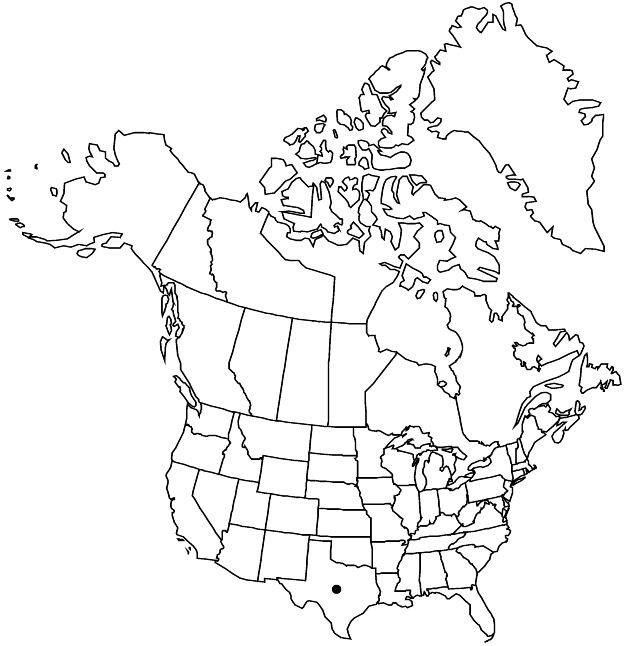Crataegus turnerorum
Phytologia 68: 298, fig. 1. 1990.
Shrubs or trees, 20–60 dm. Stems: trunk bark gray, plated; twigs straight or slightly flexuous, new growth glabrous, 1-year old light brown, 2-years old shiny, older pale ashy gray; thorns on twigs numerous, straight to slightly recurved, 2-years old black, slender, 2–5 cm. Leaves deciduous; petiole 25–33% length of blade, pubescent, eglandular; blade broadly elliptic to ovate or narrowly obovate, 2–3 cm, thin, base broadly cuneate, lobes 2 or 3 per side, sinuses very shallow, lobe apex subacute to broadly acute, margins serrate except near base, teeth small, acute or subacute, eglandular, venation craspedodromous, veins 3 or 4 per side, apex broadly acute, abaxial surface glabrous, adaxial pubescent young, glabrescent. Inflorescences 3–12-flowered, flattish, convex panicles; branches sparsely pubescent or glabrous; bracteoles caducous, few, very narrowly elliptic, membranous, margins glandular. Flowers 15 mm diam.; hypanthium glabrous; sepals narrowly triangular, ca. 2/3 length of petals, margins ± entire with some stipitate glands to glandular-serrate, adaxial surface pubescent; stamens 15, anthers purple; styles 3–5. Pomes red, suborbicular (slightly oblate), 10–13 mm diam., glabrous; flesh mealy; sepals or sepal remnants spreading; pyrenes 3–5, dorsally grooved, sides plane.
Phenology: Flowers Apr; fruiting Sep–Oct.
Habitat: Brush, dwarf oak scrub, stream banks
Elevation: 300–600m
Discussion
Crataegus turnerorum is a distinctive and little-varying taxon recorded from at least seven counties in the Edwards Plateau of Texas. It is placed here as it is unassigned to series and may perhaps be a hybrid between the partly sympatric C. greggiana, than which it is much less hairy, with a more or less glabrous small-leaved taxon such as the partly sympatric C. viridis var. desertorum or even a member of ser. Tenuifoliae as discussed in J. B. Phipps (1990). Crataegus turnerorum sometimes has slightly flexuous twigs, which could credibly be inherited from a C. viridis var. desertorum ancestor. However, the nearest existing locality for the ser. Tenuifoliae option is montane New Mexico, even though the Edwards Plateau harbors many woody species with such typically eastern-northeastern ranges as ser. Tenuifoliae.
